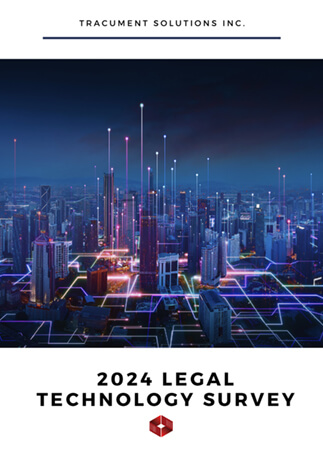
Training Methods: What Works and What Fails
Training legal professionals in new tech tools isn't just about learning a new system — it's about ensuring that high-stakes tasks are handled efficiently and accurately. Our recent survey highlights the varied experiences of legal professionals with different training methods, revealing key insights into what makes or breaks their learning journey. Let's dive into why training isn't a cookie-cutter affair and explore what makes the best and worst training experiences.
The Best Training Experiences
From our survey, it's clear that the top three best training experiences for legal professionals include in-person group sessions, video and manuals, and virtual group settings. So, what sets these experiences apart?
-
In-Person Group:
Many legal professionals appreciate the dynamic nature of in-person group sessions. These gatherings foster engagement through real-time interaction, allowing participants to ask questions on the spot and receive immediate feedback. The personal touch and ability to collaborate face-to-face enhance the overall learning atmosphere.
-
Video and Manuals:
Surprisingly, video-based training coupled with comprehensive manuals also ranked highly. Clear, concise presentations and easy-to-follow visual aids help learners grasp concepts effectively. Plus, the flexibility to revisit materials at one's own pace caters to different learning styles, ensuring retention of crucial information.
-
Virtual Group:
Virtual group settings, utilizing platforms like Zoom or Microsoft Teams, offer a blend of convenience and engagement. Features such as screen sharing, breakout rooms for collaborative tasks, and real-time polling enhance interactivity. Participants appreciate the flexibility to join sessions remotely, fostering inclusivity and accommodating varied schedules.
The Flip Side: The Worst Training Experiences
On the flip side, virtual group sessions and video-based training with manuals emerged as the least favored methods among participants. What went wrong?
-
Lack of Interaction and Engagement:
Virtual settings often limit interaction opportunities with trainers and peers, leading to feelings of disconnection and reduced engagement. Without face-to-face interaction, maintaining focus and participation becomes challenging.
-
Session Length and Attention Span:
Many legal professionals find virtual sessions lengthy, affecting attention spans and information retention. Zoom fatigue is real — extended periods in front of screens can diminish learning outcomes.
-
Difficulty in Communication:
In virtual environments, the ability to ask questions or seek clarification in real-time is hindered. This difficulty can lead to frustration and hinder the learning process, especially when dealing with complex legal tech concepts.
-
Quality of Presentation:
Poorly delivered sessions, unclear instructions, and subpar materials detract from the learning experience. Legal professionals value well-crafted presentations that are engaging, informative, and conducive to learning.
-
Impersonal Nature:
Virtual training can feel impersonal, lacking the personal connection and rapport that often enhance learning. Establishing a sense of camaraderie and collaboration is crucial for effective training outcomes.
The Love-Hate Relationship with Virtual Groups
Why do virtual group sessions evoke such mixed feelings?
On one hand, the convenience of joining from anywhere, the ability to access recordings for review, and the use of interactive tools like breakout rooms is appealing. These features cater to flexible schedules and diverse learning preferences, making training more accessible than ever before. However, the drawbacks are equally significant. The impersonal nature of virtual interactions, coupled with technical glitches and the challenge of maintaining engagement over long sessions, can detract from the overall learning experience. Participants may feel isolated, struggle with distractions, or find it harder to build rapport with trainers and peers.
Personalizing the learning experience in legal tech and embracing diverse training methods is key to empowering legal professionals with the skills they need to thrive. By acknowledging and catering to individual preferences, law firms can cultivate a culture of continuous learning and adaptation, driving success in an increasingly digital world.
When was the last time you experienced a truly effective training session? What aspects contributed to its success, or what factors might have hindered the experience?
Download our latest legal tech survey report latest legal tech survey report to uncover more insightful information and discover what makes training sessions truly effective.
You may also like
Happy Holidays Message from David Swadden, CEO
December 18, 2025
We would like to wish all our clients and readers a wonderful holiday season filled with joy and laughter.
Tracument Holiday Schedule
December 11, 2025
We would like to update all our clients of our Holiday Schedule this holiday season!
Tracument Wrapped!
December 4, 2025
What 2025 Looked like for Tracument and for you!




